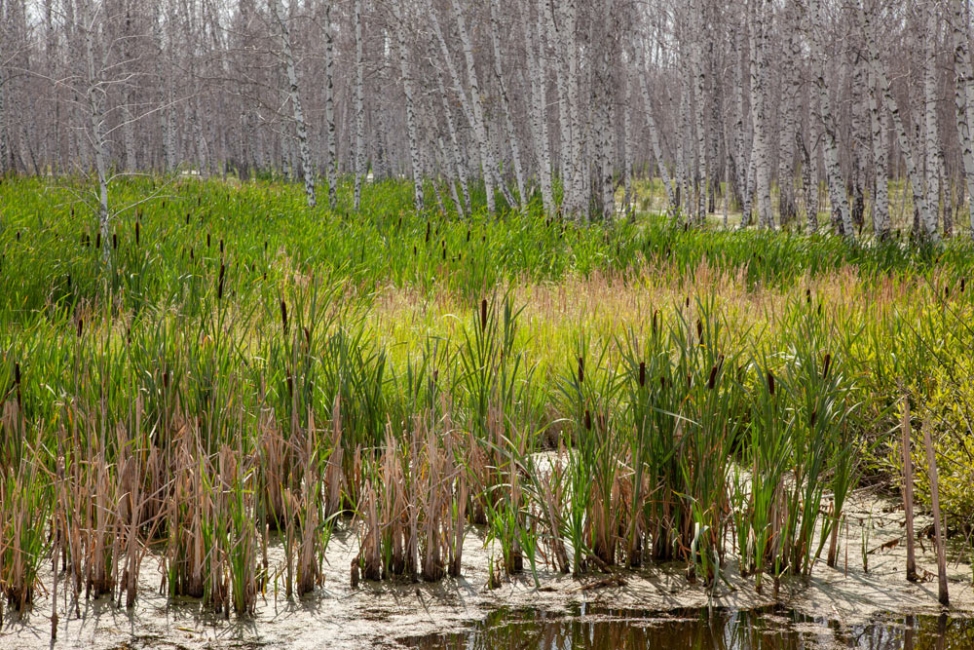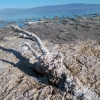
Wetlands are often described as the kidneys of the watershed because they filter, slow, and transform the water that passes through them in ways that protect downstream ecosystems. This comparison is more than a poetic metaphor. It captures the essential truth that wetlands perform quiet but powerful work, removing pollutants, moderating flows, and supporting biological processes that keep the entire watershed functioning. When wetlands are healthy, the streams, rivers, and lakes connected to them remain more resilient. When wetlands are damaged or drained, the watershed begins to show signs of stress much like a body does when its kidneys falter.
One of the most important roles wetlands play is filtering pollutants from surface water and groundwater. As stormwater enters a wetland, it spreads out and moves slowly across vegetation, soil, and organic matter. Suspended sediments settle out because they are no longer carried by fast moving water. Nutrients, such as nitrogen and phosphorus, bind to plant roots and soil particles where they are taken up by vegetation or transformed by microbial activity. Wetlands also capture metals, hydrocarbons, and other contaminants that would otherwise continue downstream. This natural filtration protects water quality, reduces the severity of harmful algal blooms, and limits the burden placed on municipal stormwater systems and downstream waterways.
Wetlands regulate water flow by holding, storing, and gradually releasing it. During storms, wetlands absorb excess runoff like a sponge. Their saturated soils, dense root systems, and complex surface textures slow water movement and reduce the energy that causes erosion. During dry periods, wetlands release stored water back into streams, helping maintain base flows and stable aquatic habitats. This natural flow regulation mirrors how kidneys maintain fluid balance in the body. Without wetlands to moderate storm surges, downstream areas face increased flooding, channel erosion, and infrastructure damage. Municipalities also lose the free service wetlands provide in maintaining stable stream levels during droughts.
Biological activity is another key reason wetlands resemble kidneys. These areas support rich communities of microbes that break down organic material and transform pollutants into forms that are less harmful or easier to assimilate. Processes such as denitrification, in which bacteria convert excess nitrogen into harmless nitrogen gas, occur readily in wetland soils. This is a crucial function because excess nutrients fuel algal blooms and degrade water quality downstream. Wetlands also sustain a variety of plants that not only filter water but also provide habitat for fish, amphibians, birds, insects, and mammals. The biological productivity within a wetland strengthens the broader food web and maintains ecological balance across the watershed.
The physical structure of wetlands also contributes to their kidney like role. Complex root networks from grasses, sedges, shrubs, and trees anchor soil in place and create pockets where water pools and settles. This structure slows water enough to allow fine sediments and pollutants to drop out of suspension. Organic matter from decaying vegetation adds another layer of filtration and enhances soil health. Over time, these processes build peat, muck, and other rich soils that store carbon, support diverse plant communities, and create stable environments for water treatment.
When wetlands are lost, the watershed loses these essential filtering and regulating processes. Stormwater travels faster and carries more sediment and pollutants. Streams become more prone to flash flooding and erosion. Habitat for wildlife fragments or disappears, and downstream water bodies receive higher loads of nutrients and contaminants. Municipalities often feel these losses directly through increased maintenance costs, culvert failures, degraded water quality, and greater regulatory pressures.
Understanding wetlands as the kidneys of the watershed helps highlight their value not just as scenic natural areas but as working infrastructure that performs essential services. Protecting and restoring wetlands gives communities a low cost, highly effective tool to support clean water, stable flows, and healthy ecosystems. When municipalities recognize wetlands as part of their stormwater strategy, the entire watershed benefits from improved resilience, reduced pollution, and a more balanced natural environment.
 Wetlands are often described as the kidneys of the watershed because they filter, slow, and transform the water that passes through them in ways that …
Wetlands are often described as the kidneys of the watershed because they filter, slow, and transform the water that passes through them in ways that …
 Field inspections of catch basins, manholes, culverts, and outfalls form the foundation of responsible stormwater management. These routine checks giv…
Field inspections of catch basins, manholes, culverts, and outfalls form the foundation of responsible stormwater management. These routine checks giv…
 Habitat disruption around drainage structures is often subtle at first, and many of the earliest signs tend to appear during ordinary field work rathe…
Habitat disruption around drainage structures is often subtle at first, and many of the earliest signs tend to appear during ordinary field work rathe…
 Harmful algal blooms have become one of the most pressing water quality problems in many regions, and their rise has been linked to a complicated blen…
Harmful algal blooms have become one of the most pressing water quality problems in many regions, and their rise has been linked to a complicated blen…
 The Salton Sea is one of California’s most unusual and tragic landscapes, a place shaped by accident, transformed by ambition, and ultimately pu…
The Salton Sea is one of California’s most unusual and tragic landscapes, a place shaped by accident, transformed by ambition, and ultimately pu…
 *The screenshots used in this article are from Roadwurx, an asset management software created for road maintenance departments. Managing a town’…
*The screenshots used in this article are from Roadwurx, an asset management software created for road maintenance departments. Managing a town’…